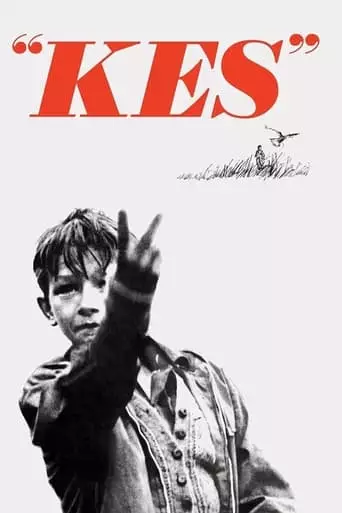
Bullied at school and ignored and abused at home by his indifferent mother and older brother, Billy Casper, a 15-year-old working-class Yorkshire boy, tames and trains his pet kestrel falcon whom he names Kes. Helped and encouraged by his English teacher and his fellow students, Billy finally finds a positive purpose to his unhappy existence—until tragedy strikes.
Kes (1970), directed by Ken Loach, is a poignant British drama that explores themes of childhood, class, and the harsh realities of working-class life in post-war Yorkshire. The film follows a young boy named Billy Casper, played by David Bradley, who is growing up in a bleak environment filled with familial neglect, school failure, and limited prospects. Billy’s life takes a transformative turn when he befriends and trains a kestrel, a wild bird of prey. This bird, named Kes, becomes a symbol of freedom and hope for Billy, giving him a rare chance to escape from the brutalities of his world, albeit temporarily.
Plot Overview: Billy Casper, a fifteen-year-old schoolboy, lives in the industrial town of Barnsley. His home life is troubled, marked by an indifferent mother and a violent older brother, Jud. Billy is a quiet, introverted boy who struggles at school, where he is dismissed by both his teachers and peers as a failure. One day, Billy finds and befriends a kestrel, a bird he names Kes, and begins training it. Through this relationship, Billy finds a sense of purpose, pride, and connection to something greater than his dismal life. However, the temporary solace he gains from his bond with the bird is shattered when tragedy strikes, revealing the relentless cycle of hardship in his life.
Analysis: Ken Loach’s film is often regarded as a masterpiece of British social realism. Loach, alongside writer Barry Hines (who based the story on his novel A Kestrel for a Knave), paints a raw and unromanticized portrait of working-class life in England. The film critiques the educational system, which at the time was divided into grammar and secondary modern schools, often relegating students like Billy to lower expectations and limited futures. The film also comments on the class divide, as Billy’s dreams and aspirations are stifled by the harsh realities of his environment.
One of the most striking aspects of Kes is its unflinching portrayal of Billy’s relationship with his family. His mother is indifferent to him, and his older brother Jud is abusive, further exacerbating Billy’s sense of isolation and neglect. However, his bond with Kes offers a rare moment of tenderness and escape, even as it highlights the absence of love and support in his life. The film uses Kes not just as a pet, but as a symbol of freedom, pride, and resilience—a stark contrast to Billy’s oppressive, constrained life.
Themes:
10 Reasons to Watch Kes:
What You Will Feel After Watching Kes: After watching Kes, you may feel a mix of sadness, anger, and profound empathy. The film’s portrayal of Billy’s life—marked by isolation, neglect, and a harsh educational system—elicits a deep emotional response. The tragic fate of Billy and Kes highlights the enduring struggles of the working class and the cyclical nature of poverty. Despite the film’s heavy themes, it also conveys a sense of hope and the power of resilience through Billy’s bond with Kes. However, the film’s ending is bittersweet, leaving viewers with a sense of helplessness in the face of systemic injustices.
In conclusion, Kes is a beautifully crafted film that offers a critical look at the socio-economic challenges of post-war Britain while telling a deeply personal and emotional story about a boy’s bond with a bird. Its themes of isolation, hope, and the struggle for personal agency make it an unforgettable cinematic experience
